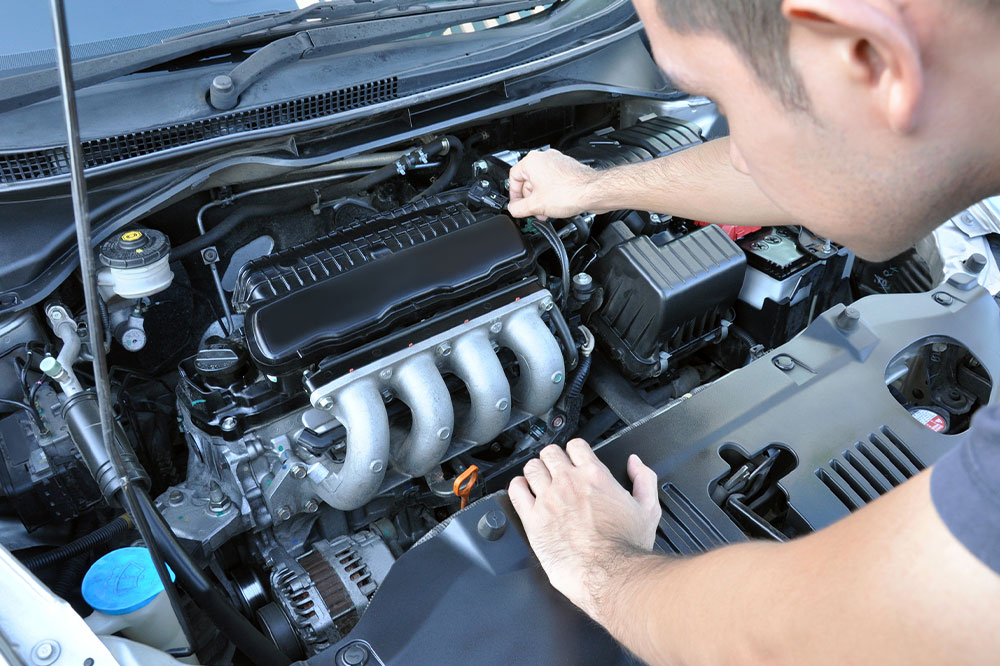
Types and important parts of small engines
Small engines are powerful machines that are crucial pieces of machinery in various industries and households. These engines, typically with a displacement of less than 1000cc, are commonly used in lawnmowers, generators, chainsaws, and other tools and equipment. With their compact size and reliable performance, these small engines are perfect for powering devices that require mobility and versatility. Small engines are essential to modern life for landscaping, construction, or emergency backup power.
Types of small engines available
Here are some common small engine types you can find.
2-stroke small engine
An internal combustion engine that completes one whole revolution is called a 2-stroke small engine. It means the engine has a more straightforward design, with fewer moving parts and lighter weight. The operational structure of a 2-stroke engine involves the combustion of a fuel and air mixture inside the engine cylinder, which creates pressure that pushes the piston down to generate power to operate the motor.
4-stroke small engine
A 4-stroke small engine is an engine that completes a cycle with four strokes of the piston. It is known to produce higher torque at a lower RPM. Unlike 2-stroke engines, a separate fuel tank and oil reservoir lubricate various engine parts. The fuel is injected into the engine during the intake stroke and then compressed to create power for driving the machine. Finally, the excess gasses are expelled through an exhaust valve in the exhaust stroke.
The importance of small engine repair
Depending on the engine model and the kind of device or vehicle, replacing a small engine can cost anywhere from $1,000 to $4,000 or more. Though repairs can have a lesser price, the ideal cost-saving measure is to fix the engine yourself.
A damaged machine can quickly turn into a fire hazard. The equipment can malfunction, and it could result in injuries. Proper repairs can keep the equipment working effectively and securely. Knowing how to fix a small engine can save you money, but there are other advantages. You will continue to become more comfortable and confident with the machinery as you work on the engines, ensuring you can always use it carefully and effectively. Additionally, you’ll be more qualified to train others to use the tools. You can identify additional issues that could be even more problematic if you are familiar with minor repairs and the specifics of each engine. The sooner minor problems are resolved, the less likely they will develop into more expensive issues.
If you decide to sell the equipment at any point or trade it in for an upgrade, you can assure buyers about the equipment’s condition to secure a better price and a more lucrative deal.
Courses for small engine repair services
Courses for small engine repairs are designed to teach individuals how to repair and maintain small engines. These courses can be online or in-person. They cover engine theory, carburetor repair, electrical systems, and troubleshooting techniques. Small engine courses benefit individuals who work in the lawn care industry or are avid DIY enthusiasts.
By taking these courses, individuals can learn how to diagnose and fix engine issues, saving them time and money in the long run. Enrolling in a small engine program will teach you how to examine, maintain, and fix small gas and diesel cars, trucks, motorcycles, snowmobiles, lawnmowers, chainsaws, and other gas-powered machinery. The courses will address technical and mechanical subjects while working with two- and four-stroke cycle engines, including brake mechanisms, engine design and functioning, fuel control for engines, systems for auxiliary electricity, chassis and steering.
Through specialized, practical workshop courses, students’ problem-solving abilities will be improved. While some programs concentrate on a narrow range of engines, others focus on a particular type of small engine.
Small engine parts
Here is a list of small engine parts and their functionalities:
Piston: The piston is an essential part of a reciprocating engine. It helps convert the chemical energy from fuel combustion into useful mechanical power.
Tappet: The tappet is a component that transfers motion to cause valves to open and close.
Connection rod cap: Two cap screws attach the connection rod cap to the connecting rod, allowing installation and removal from the crankshaft.
Armature and coil: The armature and coil are the rotating part of an electrical generator.
Blower housing: The blower chassis prevents other small engine parts from damage caused by exposure or human contact.




